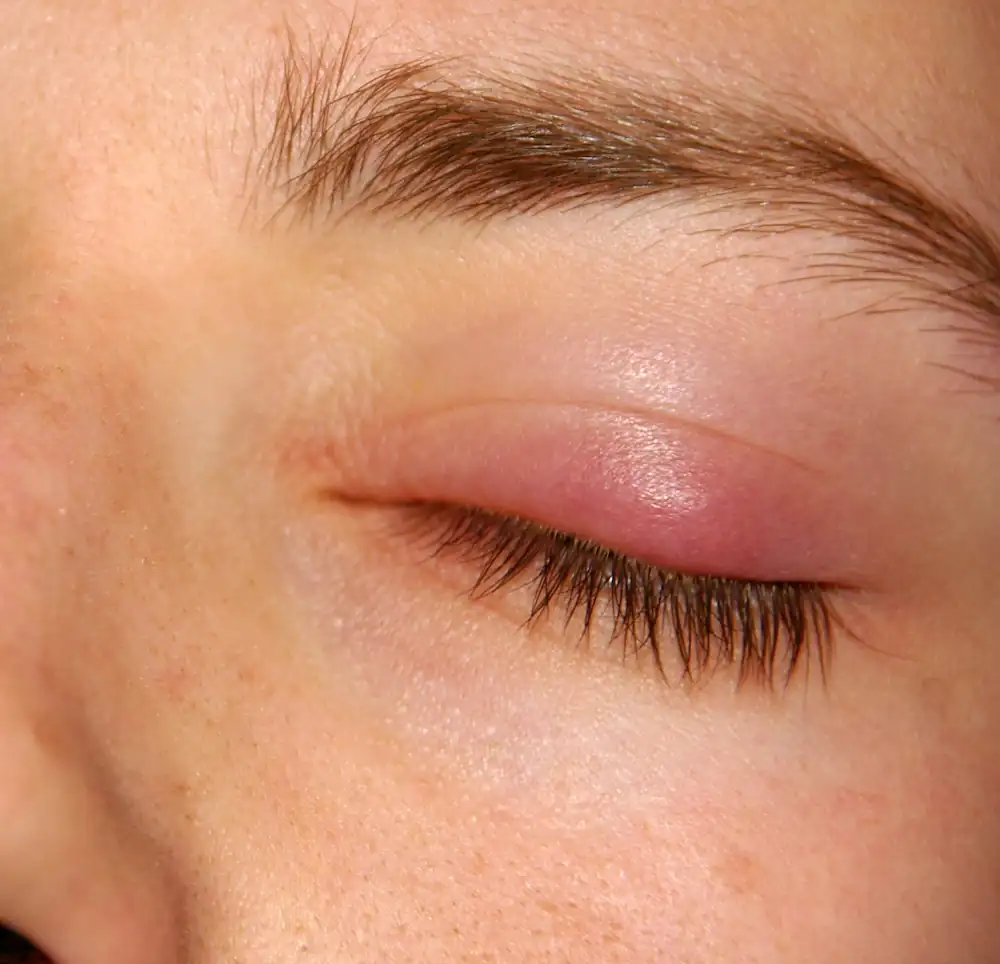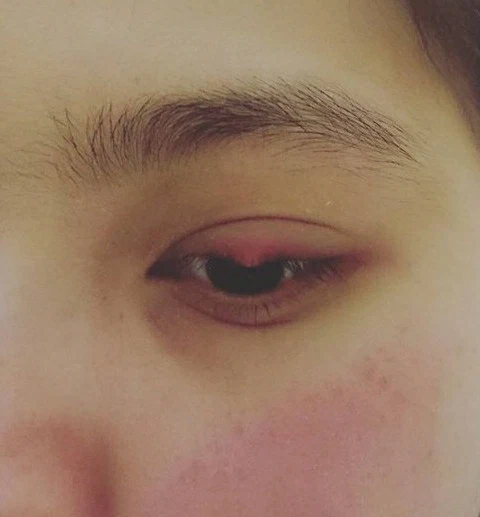Stye : Diagnosis and Treatment
Summary :
◉ Diagnosis of stye
The diagnosis of stye is based on the appearance of the eyelid. Your doctor will usually diagnose a stye simply by looking at your eyelid. He may use a light and a magnifying device to examine your eyelid. You generally won't need to take any tests.
◉ Differential diagnosis of stye
- Chalazion : Unlike a stye, a chalazion is usually not painful and is not caused by a bacterial infection.
- Carcinome basocellulaire.
- Cellulite préseptale.
- Dacryocystitis and canaliculitis.
◉ Stye or Chalazion
A Chalazion is a chronic infection secondary to a sebaceous gland on the inner edge of the blocked eyelid (conjunctival side).
Stye and chalazion differ mainly by their location and the intensity of the pain :
- The stye causes a rounded induration centered by an eyelash, at the level of the free edge of the eyelid, while the chalazion is located at a distance.
- The stye is usually painful and accompanied by a purulent secretion, while the chalazion is painless on palpation and without pus.

Chalazion
◉ Treatment
In the majority of cases, the stye heals spontaneously in about one or two weeks.
- Don't rush it, let it pop on its own. Some styes spread skin infections when they burst.
- Close your eye and apply sterile hot water compresses to the stye for 10 to 15 minutes in massage (repeat 3 to 4 times a day for several days),
- Keep your eyes closed while using the compress.
- Regularly wash your eyes with saline solution
- Do not reuse your contact lenses until fully healed.
- Eye drops and antiseptic creams available without a prescription in pharmacies can be applied locally,
- A simple pain reliever (such as paracetamol) or a nonsteroidal anti-inflammatory drug (such as ibuprofen) can help relieve pain
Pour un orgelet qui persiste, votre médecin peut recommander des traitements, tels que :
- Antibiotics: Your doctor may prescribe an antibiotic in the form of eye drops, cream or tablets depending on your case.
- If your stye does not go away, your doctor may make a small incision in it under local anesthetic to drain the pus (this is not the same as pop it yourself at home).
◉ When should you see a doctor
Often, it is not necessary to consult a doctor because the stye heals spontaneously.
- If there is no improvement after 15 days.
- If sight is impaired by the stye.
- If the pain is too strong
- If your eye is red
- If the stye is located on the inner part of the eyelid
- If the styes keep coming back.
◉ Prevention
The best way to prevent a stye is to practice good facial hygiene, including :
- Keep your eyelids and eyelashes clean.
- Wash your hands thoroughly and often, especially before touching your face and eyes.
- Do not share towels or washcloths with someone who has a stye.
- Don't try to pop the stye.
- Be careful when using and removing eye makeup.
◉ Frequently Asked Questions
Q: How to get rid of an internal stye?
A: Internal styes can be more painful and take longer to heal. Treatment for an internal stye consists of oral antibiotics and incision and drainage if necessary. Topical antibiotics are generally ineffective.
Q: How long does a stye last?
A: A stye will usually break out on its own within 5 days, but sometimes it can last up to 1-2 weeks.
Q: What happens if a stye doesn't go away?
A: You should see your doctor if your stye does not improve after a few days or if it gets worse.
Q: What puts my child at risk
a stye?
A: Anything that irritates the eyes, including frequent rubbing, makeup, contact lenses, or having other eyelid infections. etc
Q: What causes a stye?
A: One or more glands under the skin of the eyelid become
infected, most often by "staphylococci" bacteria.
Q: What are the
complications from a stye?
A: It can lead to a more serious infection of the skin of the eyelid and surrounding area (cellulitis).
Q: Are styes caused by stress?
A: Although there is no clinical evidence to prove that stress can cause a stye. However, stress and lack of sleep can increase the risk of getting a stye by lowering immunity and making the body more susceptible to infections.
Stye : Symptoms and Causes Stye : Diagnosis and Treatment

